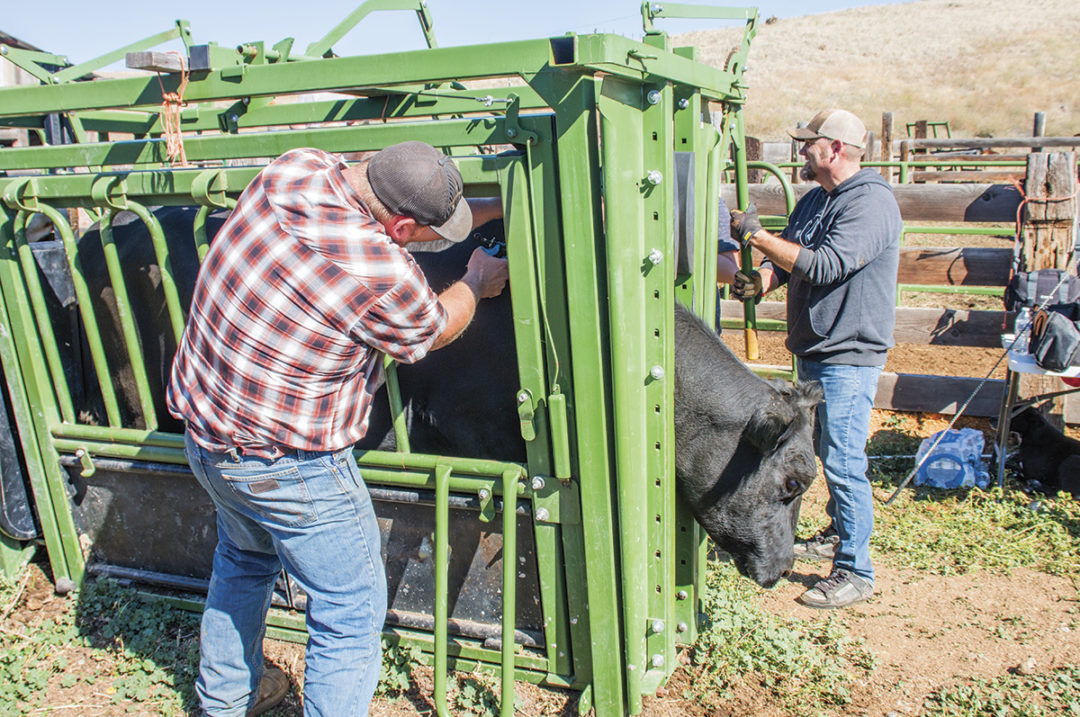The term “antibiotic stewardship” might sound high level, but it’s something cattle producers and veterinarians practice every day. In human health care, antibiotic stewardship means ensuring that antibiotics are used only when necessary and appropriate. It’s an important undertaking: the Centers for Disease Control and Prevention (CDC) estimates that antibiotic-resistant germs cause infections in nearly 3 million people every year, almost 36,000 of whom die as a result. Preserving the usefulness of antibiotics for treating human infections is a life-or-death matter.
Those of us using antibiotics in animals also want to preserve their usefulness in combating important problems such as pneumonia or pinkeye in cattle. But, we have the added responsibility to ensure our antibiotic use doesn’t result in residues in our food products or antibiotic-resistant bacteria that could find their way into people.
One way to bring antibiotic stewardship down to the farm level is to consider it through the lens of the familiar “five W's” of who, what, when, where and why.
1. Who?
Practical antibiotic stewardship principles require an understanding of the differences in the use of these medications among different animal species. “Who” is getting treated?
Because the animals we treat with antibiotics eventually enter the food supply, we are required to follow certain regulations governing how we use them in those animals. In that sense, some principles of antibiotic stewardship are already “prescribed” for us.
These rules apply only to food animals though, which begs a seemingly straightforward question: “What exactly is a food animal?” The answer turns out to be straightforward as well: cattle, pigs, sheep, goats, poultry and a few others. While a family’s old pet milk cow might never produce salable milk or go to slaughter, these rules apply to her just as they would a milking Holstein in a commercial dairy.
These rules don’t apply to companion animals. It becomes incumbent upon people using antibiotics in those species to understand and practice responsible stewardship in the absence of such regulations.
2. What?
Antibiotic stewardship also involves choosing the best antibiotic for the situation at hand. In animal health, we tend to have less information at our fingertips to help guide that decision, compared to our counterparts in human medicine who often have access to culture and antibiotic sensitivity results. That doesn’t make our decisions any less important, though. Choosing the right antibiotic the first time means a higher probability of success with one treatment, as opposed to needing repeated doses.
Those aforementioned regulations also affect our choice of antibiotics. Some injectable and all feed-grade antibiotics are prohibited for use in an extra-label fashion. Furthermore, when treating cattle, the antibiotic’s slaughter withdrawal must also be considered. For these reasons, antibiotic stewardship necessitates a close working relationship with, and guidance from, a veterinarian.
3. Where?
Where is the best place to give the animal the antibiotic? Here, we’re not talking about a chute or alleyway but rather the route of administration. When we consider using an antibiotic in a calf, cow or bull, we usually first think of an injection, but feed and water applications can be effective for treating groups of animals. Stewardship includes knowing the best administration route for the situation, paying close attention to directions regarding the injection site (intramuscular versus subcutaneous) and calculating the necessary dose as accurately as possible.
4. When?
Antibiotic stewardship also means understanding when using those medications is warranted and when they’re not going to be useful. A common pitfall for producers and veterinarians alike is the “hammer and nail” trap. Because antibiotics are often the only apparent tool (hammer) that’s in our toolbox, everything (every sick calf) tends to look like a nail. Some sick calves exhibit the chronic effects of bacteria that are no longer in their system or have illnesses that were not bacterial in the first place. Antibiotics work best on bacterial infections when given early in the course of illness, underscoring the importance of making a careful diagnosis and promptly identifying treatment candidates.
Another component of antibiotic stewardship is allowing the drug a chance to work. Many newer cattle antibiotics feature long (several days at least) persistence in the animal’s system; just because a calf isn’t back to 100% the day after a treatment doesn’t necessarily mean the drug isn’t working.
5. Why?
Finally, at its essence, antibiotic stewardship requires us to understand why we should use these tools in the first place. Veterinarians and producers are able to use antibiotics to treat individual cattle suffering from bacterial problems such as an infected wound, foot rot or pneumonia. But these medications can also be used for control, and even prevention, of diseases in groups of cattle. “Control” refers to treating a group when some of the animals are sick and others are at high risk of becoming sick as well. “Prevention” describes using antibiotics before animals are sick, such as in calves stressed by transport and frequent commingling. Accurately understanding which groups of animals need antibiotics for control or prevention or – more importantly – which groups don’t need antibiotics, can go a long way to reducing unnecessary antibiotic use.
Antibiotic stewardship is important not just for human healthcare providers, but also for those raising animals for our food supply. Even though we are subject to rules and regulations that govern the use of these tools, we still have a world of choices available to us when it comes to using them in our cattle. In order to make the best choices – both for the animals and for responsible antibiotic stewardship – advice and guidance from your veterinarian is more important than ever. The choices we make regarding antibiotic use right now – along with the preventive and management efforts we take to reduce the need for them in the first place – will affect how many of those tools will be available to us in the future.








